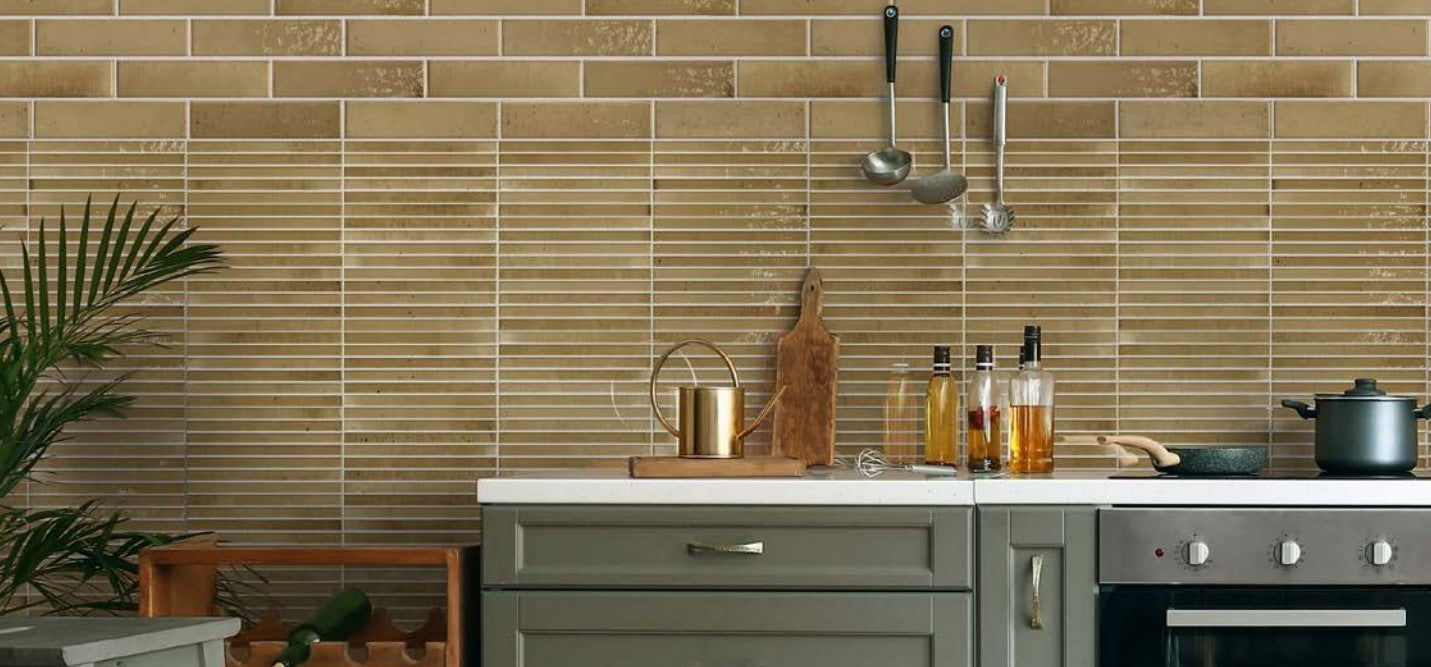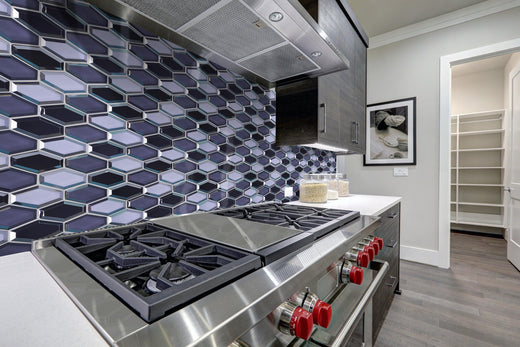Mosaic tiles have turned ordinary surfaces into artwork since ancient times. The Greeks and Romans used these tiny pieces to create dazzling floor and wall designs, and their methods still influence interiors today. Yet most people are surprised to learn that some mosaic tiles are fired at temperatures as high as 1200°C to increase strength and durability. This extreme process means mosaic tiles are not just beautiful, but also among the toughest materials you can choose for your home.
Table of Contents
- Defining Mosaic Tiles: Origins And Types
- The Importance Of Mosaic Tiles In Interior Design
- How Mosaic Tiles Are Made And Installed
- Exploring Patterns And Designs In Mosaic Tiles
- Real-World Applications Of Mosaic Tiles In Renovation
Quick Summary
| Takeaway | Explanation |
|---|---|
| Mosaic tiles enhance aesthetic and functional aspects. | They serve as powerful design elements that contribute to visual appeal and practical benefits in various environments. |
| Durability and moisture resistance are key advantages. | Mosaic tiles maintain their performance under high traffic and moisture, making them suitable for kitchens and bathrooms. |
| Diverse materials allow creative flexibility. | From glass to stone, various materials facilitate unique designs and enable designers to achieve desired aesthetics and themes. |
| Mosaic tiles can be used in historical restoration. | Their value extends to preserving architectural integrity during renovations, ensuring compatibility with original designs. |
| Precision installation is crucial for best outcomes. | Professional techniques are essential for flawless application, as mosaic tiles require careful placement to achieve desired visual effects. |
Defining Mosaic Tiles: Origins and Types
Mosaic tiles represent an ancient art form of decorative surface design that transforms small, individual pieces into stunning visual narratives. Originating in early civilizations, these intricate compositions have evolved from basic stone arrangements to sophisticated artistic expressions used in contemporary interior design.
The Ancient Roots of Mosaic Craftsmanship
The history of mosaic tiles traces back to the Greeks and Romans, who pioneered sophisticated techniques for creating complex decorative surfaces. According to Getty Museum Research, early mosaics utilized pebbles embedded in mortar, with Romans advancing the craft through the opus tessellatum technique. This method involved precisely cutting and arranging small, uniform cubes called tesserae to create elaborate floor and wall designs.
Understanding Mosaic Tile Composition
Mosaic tiles are characterized by their unique construction and diverse material composition. Traditional mosaic materials include:
- Limestone and marble for foundational pieces
- Colored glass for vibrant accent elements
- Slate and terracotta for textural variations
- Ceramic and porcelain for modern adaptations
The size and arrangement of these tiny pieces determine the intricacy and visual complexity of the final design. Smaller tesserae allow for more detailed and nuanced imagery, while larger pieces create bold, geometric patterns.
Below is a table summarizing the main materials commonly used in mosaic tiles along with their key characteristics and most frequent uses.
| Material | Key Characteristics | Common Uses |
|---|---|---|
| Limestone | Natural, subtle color, durable | Background pieces, classic mosaics |
| Marble | Elegant, polished, strong | Floors, walls, accent elements |
| Glass | Vibrant colors, reflective, moisture-resistant | Backsplashes, decorative accents |
| Slate | Rich texture, earthy tones, non-slip | Floors, rustic designs |
| Terracotta | Warm tones, textured, porous | Rustic or Mediterranean styles |
| Ceramic | Versatile, easy to cut, modern look | Walls, shower floors |
| Porcelain | Extra durable, stain-resistant, dense | High-traffic floors, bathrooms |

For homeowners and designers interested in exploring unique tile options, read more about contemporary mosaic tile applications that blend traditional craftsmanship with modern aesthetic sensibilities.
The Importance of Mosaic Tiles in Interior Design
Mosaic tiles transcend mere surface covering, representing a sophisticated design element that transforms spaces through artistic expression, functionality, and visual complexity. These intricate tile arrangements offer designers and homeowners powerful tools for creating unique, personalized environments.
Aesthetic Versatility and Visual Impact
Mosaic tiles provide unparalleled design flexibility, enabling creators to craft intricate patterns, visual narratives, and immersive spatial experiences. From subtle geometric arrangements to elaborate pictorial scenes, these tiles allow for extraordinary creative freedom. Learn about advanced mosaic design techniques that can elevate interior aesthetics.
According to the National Park Service, ceramic mosaic tiles offer significant advantages in residential and commercial spaces. Their modular nature enables complex, adaptable designs that can complement various architectural styles and interior themes.
Functional Advantages of Mosaic Tiles
Beyond aesthetic appeal, mosaic tiles deliver substantial practical benefits:
- Exceptional durability and long-term performance
- Superior moisture and stain resistance
- Easy maintenance and cleaning
- Versatile application across multiple surfaces
- Enhanced slip resistance in high-traffic areas
The compact size and tight installation of mosaic tiles create seamless, robust surfaces that withstand significant wear while maintaining their original beauty. Their ability to conform to curved or irregular surfaces makes them ideal for diverse architectural contexts, from kitchen backsplashes to intricate bathroom designs.
How Mosaic Tiles Are Made and Installed
The production and installation of mosaic tiles represent a sophisticated blend of artistic craftsmanship and precise engineering. From raw material selection to final placement, each stage requires meticulous attention to detail and specialized technical knowledge.
Manufacturing Process
Mosaic tile production begins with carefully selected raw materials, typically ceramic powders, glass, or natural stone fragments. Explore advanced tile manufacturing techniques that ensure superior quality and durability.
According to the U.S. National Park Service, ceramic mosaic tiles undergo a complex manufacturing process. Key steps include:
- Refined ceramic powder preparation
- Dust-pressing into precise shapes
- High-temperature firing (around 1200°C)
- Vitrification to enhance structural integrity
Installation Techniques
Successful mosaic tile installation demands precision and specialized techniques. Professional installers focus on several critical aspects:
- Selecting appropriate substrate materials
- Preparing smooth, level surfaces
- Choosing compatible adhesives and grouts
- Ensuring proper alignment and spacing
- Implementing expansion joints to prevent cracking
The compact size of mosaic tiles requires exceptional skill, with installers meticulously placing each piece to create seamless, visually stunning surfaces. Modern installation methods often utilize mesh-mounted tile sheets, which streamline the process while maintaining design complexity.

Exploring Patterns and Designs in Mosaic Tiles
Mosaic tile designs represent a sophisticated artistic language where color, shape, and arrangement converge to create visually compelling narratives. Beyond mere surface decoration, these intricate compositions communicate cultural stories, aesthetic principles, and design philosophies.
Historical Design Conventions
Traditional mosaic design follows complex regional and historical traditions. Discover diverse mosaic design techniques that showcase the evolution of this remarkable art form.
According to the Getty Museum, different geographic regions developed distinctive mosaic design approaches:
- Italian workshops preferred black and white floors with central polychrome emblems
- Gallic traditions featured geometric compartments with multiple intricate borders
- Eastern design schools emphasized framed picture panels
Contemporary Mosaic Design Principles
Modern mosaic tile design builds upon centuries of artistic innovation while introducing contemporary aesthetic sensibilities. Contemporary designers leverage advanced techniques to create dynamic visual experiences:
- Blending traditional and abstract geometric patterns
- Experimenting with unconventional color palettes
- Incorporating mixed material compositions
- Utilizing digital design technologies for precision
The interplay of tesserae sizes, color gradients, and spatial arrangements allows designers to create depth, movement, and emotional resonance within architectural spaces. Each mosaic tile installation becomes a unique artistic statement, transforming ordinary surfaces into extraordinary visual narratives.
The following table compares key historical and contemporary design approaches in mosaic tile art, highlighting their unique principles and influences.
| Design Era | Defining Features | Typical Motifs/Patterns | Notable Techniques |
|---|---|---|---|
| Ancient/Traditional | Regional styles, hand-cut tesserae, symbolism | Geometric, pictorial scenes, emblems | Opus tessellatum, pebble mosaics |
| Roman | Uniform small pieces, elaborate polychrome floors | Central emblems, borders, framed panels | Precise geometric compartmentalization |
| Contemporary | Blend of old and new, digital precision | Abstract, mixed materials, color gradients | Digital layouts, mesh-mounted sheets |
Real-World Applications of Mosaic Tiles in Renovation
Mosaic tiles represent more than decorative elements; they are critical components in architectural restoration, historic preservation, and modern design transformation. Their versatility enables professionals to address both aesthetic and functional renovation challenges across diverse environments.
Historic Building Restoration
Historic building renovation demands exceptional attention to architectural authenticity. Explore specialized tile restoration techniques that respect original design integrity while meeting contemporary performance standards.
According to the National Park Service, ceramic mosaic tiles play a significant role in preserving architectural heritage:
- Maintaining original floor and wall design characteristics
- Providing historically accurate replacement materials
- Ensuring compatibility with existing architectural elements
- Implementing protective treatments for long-term preservation
Contemporary Renovation Strategies
Modern renovation approaches leverage mosaic tiles’ adaptability to transform spaces across multiple contexts:
- Bathroom and kitchen surface upgrades
- Commercial space redesign and modernization
- Adaptive reuse of historic architectural structures
- Creating unique accent walls and feature areas
Professional designers recognize mosaic tiles as powerful tools for bridging historical craftsmanship with contemporary design sensibilities. Their ability to withstand moisture, provide slip resistance, and offer extraordinary visual complexity makes them invaluable in renovation projects ranging from residential remodels to large-scale institutional restorations.
Transform Your Space With Expert Mosaic Tile Solutions
Are you inspired by the versatility and intricate beauty of mosaic tiles but feel overwhelmed by the challenge of selecting, sourcing, or installing the ideal materials for your renovation? The article highlights how mosaic tiles excel in both creative expression and functional performance, yet finding the right products and support for your unique vision can be a daunting process. At TileChoices.com, we remove the guesswork by offering a curated selection of premium mosaic tiles, blending traditional craftsmanship with modern ease. You get access to customized options, detailed guidance, and a seamless shopping experience designed for both homeowners and professionals.

Bring your vision to life with confidence. Browse the full collection and take advantage of educational resources and secure ordering now at TileChoices.com. For more inspiration and solutions, visit our blog’s feature on modern mosaic tile applications or explore the latest expert installation tips to ensure lasting results. Start your project with materials you can trust and expert support ready to help every step of the way.
Frequently Asked Questions
What are mosaic tiles made of?
Mosaic tiles are typically composed of materials such as limestone, marble, glass, slate, terracotta, ceramic, and porcelain. These materials can be arranged in intricate patterns to create visually appealing designs.
How are mosaic tiles installed?
Mosaic tile installation requires precision and specialized techniques, including selecting appropriate substrates, preparing smooth surfaces, using compatible adhesives, ensuring proper alignment, and implementing expansion joints to prevent cracking.
What are the benefits of using mosaic tiles in interior design?
Mosaic tiles offer several advantages, including exceptional durability, moisture and stain resistance, easy maintenance, versatility across multiple surfaces, and enhanced slip resistance, making them suitable for high-traffic areas.
How can I incorporate mosaic tiles into my renovation projects?
Mosaic tiles can be used in various renovation contexts, such as upgrading bathroom and kitchen surfaces, redesigning commercial spaces, and creating unique accent walls. Their adaptability allows for a blend of historical craftsmanship and contemporary design.
Recommended
- Penny Round Calacatta Matte Mosaic UT-3997 – Elegant Tile Design – Tile Choices
- Nero Marquina Honed 2x2 Hexagon Marble Mosaic Tile – Tile Choices
- Starlike EVO Grout 110 Grigio Perla - Gray Epoxy Grout for Finish – Tile Choices
- Starlike EVO Grout 100 Bianco Assoluto – Premium White Epoxy Grout – Tile Choices



